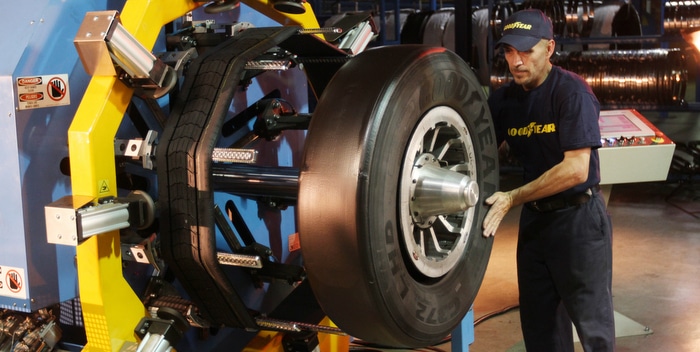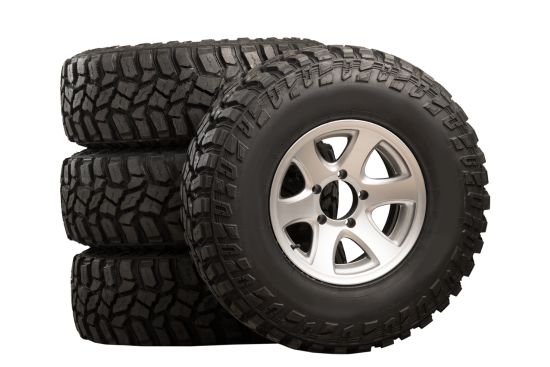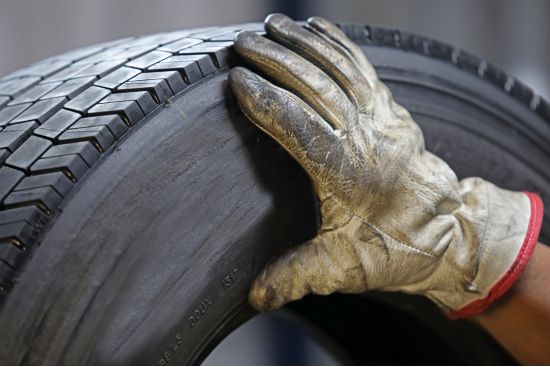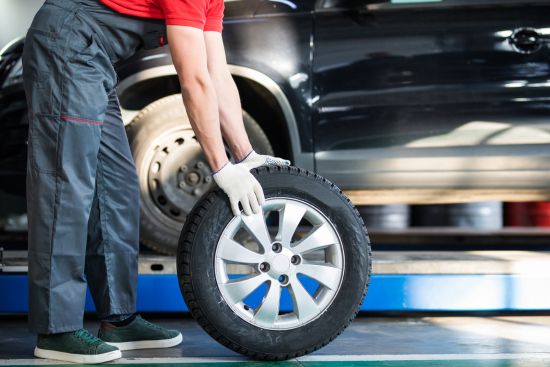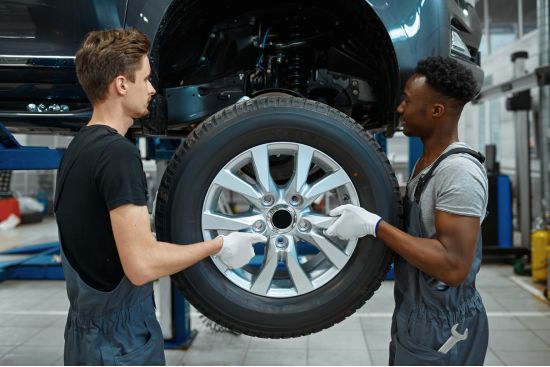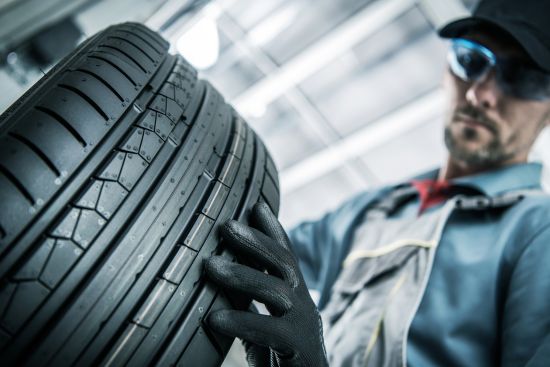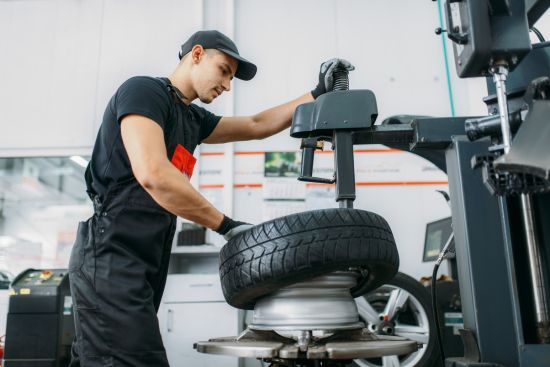Retreading, a tire is a good way to save money and eliminate environmental waste. It also reduces your overall cost of vehicle ownership as tires are the second largest expense in automotive maintenance. Retreading tires is a safe practice and can make old tires perform like new tires in both performance and safety. There are however some tires that you should not refurbish. In this article, I will discuss where to find your local shop, some insights on recapping, and my experience with tire retreading near me.
Map of Tire Retreading Near Me
For “Tire Retreading Near Me”, see below for locations…
What is Tire Retreading?
Retreading is also called Recapping or remolding. It is a refurbishing manufacturing process performed on tires to replace worn out treads. A retread is applied to the casings of used tires that pass a safety inspection. When a tire goes through the recapping process is saves about 90% of the original materials. Also, the material cost for the re-tread is about 20% of what a new tire would cost.
The process is literally pulling off an old worn out tread and attaching a new tread.
What Are The Benefits of Tire Retreading
Retreading has a handful of benefits including making your tires like like new. Most notably it will cost less than purchasing a new set of shoes for your vehicle. Here are some retreading stats:
- Environmental Benefits: The amount of oil used to retread is 66% less oil than manufacturing a new tire.
- Cost Benefits: You will save 30% to 50% off buying new tires.
- Specialized tread patterns for various surfaces.
- Next-gen compounds that resist wear and tear (extend the life and mileage of the tire).
Is Refurbishing a Tire Safe
Refurbishing a tire is safe according to the TRIB Tire and Retread Information Bureau. It is considered so safe in fact that almost 80% of all aircraft tires go through the retread process. Also, all US federal vehicles are required to use retreads when available. The drawback is usually assessed in ride comfort and not safety. People often complain that retreads don’t offer as smooth of a ride as a new tire. There are a few potential safety issues, but not certainly as dangerous as driving on bald tires.
In the US the National Highway Traffic Safety Administration acknowledges there is a public perception that retreads are less safe. People feel that way because heavy equipment vehicles and semi trucks leave chunks of rubber debris on the roadways. The agency continues to research how much is related to retreads vs standard tires and how it may relate to tire failures and safety concerns.
Sometimes Retreads Get a Bad Wrap…
You may have heard about “Road Gators”, that’s wrapped up tires you see on the highway. Most people assume those are the result of retreads and then furthermore assume retreads are unsafe. It’s been proven that about 68 percent of those broken up tires are the result of brand new tires falling apart.
One argument that does hold true is that retreads can have inferior quality compared to a new tire. It all depends on who did the work. When considering tire retreading near me, you need to find a company with a good reputation and good reviews.

Process of Putting a New Tread on the Tire Casing
How Do They Recap a Tire
Recapping starts with inspecting the tire and then a process to find non-visible damage and punctures. Sometimes the casings are repaired or thrown away. If a casing is in good condition it can actually be retreaded many times over. If a casing passes inspection, the old tread is buffed out.
Next, the casings get scanned looking for issues that may impact the performance. Then the tread is buffed out, it will either be Pre Cured or Mold Cured. A Pre Cure is when a previously prepared tread is cemented to the casing.
It’s the most common method of retreading, but leaves a seam on the tire. A Mold Cure is when raw rubber gets applied to the tire casing and then dipped in a mold where the tread is formed. Damaged materials are removed and any required repairs are made before they create a new mold.
The next phase is where they bond the rubber tread to the casing. This is performed at low temperatures to eliminate stress and distortion.
Last, they inspect the tire to ensure it is safe to drive on and it will perform as expected.
What Kind of Tires Can Be ReTreaded
Some common vehicle types that go through the process are race cars, buses, delivery trucks, heavy-duty equipment trucks, Semi trucks and airplanes. The practice used to be very common up until around 2008 when it stopped being done for passenger vehicles.
Some of the reason it stopped was ride discomfort and safety concerns. Another contributing factor was cheaper new tires came on the market, eliminating the need to often retread tires.
You can retread used tires, but it will require the casing to pass inspection. If you are already saving money getting a used tire in good condition, you may save more when it’s ready for recapping.
How Long Will a Refurbished Tire Last
If the casing is good a tire can be retreaded multiple times. A commercial vehicle’s tires can last up to 600,000 miles if they’re retreaded two to three times. The key is that the tire age also isn’t over 6 years, that’s when the rubber chemical compounds begin to show rot.
This is why commercial vehicles and heavy equipment are more likely than cars to get retreaded. In a short amount of time, they are exposed to massive mileage. By refurbishing the tire tread you can get significantly more mileage out of the tire at a fraction of the cost of getting new ones.
When to Retread vs Get a Replacement
If the casing is good and has not aged past 6 years, you can always retread. However, it’s common that the ride you get isn’t so comfortable. If you need to save money and don’t care as much for a smooth ride, retreading is an option.
If you value a smooth ride, your tire age is older than 6 years, or your casing has been damaged or repaired before, opt for new tires. You can read more about the signs its time to replace your tires here.
Legal Regulations on Tire Retreading
Tire retreading is both safe and legal. Here is what the Federal and State governments say about them.
Federal Retread Regulations
Currently, there are no Federal Motor Vehicle Safety Standards (FMVSS) required for retreads. There are however manufacturing quality and safety standards governing them.
In fact, there are certain government-owned vehicles that are required to use retreads in order to save money. The Federal Motor Carrier Safety Administration also says it is safe for commercial carriers to transport hazardous materials using a vehicle with retreads.
State Retread Regulations
At the state level, there are some regulations and limitations on commercial vehicles with recapped tires. For example, some limit the tire placement you can use, like the front wheels on a bus.
No states however say that retreads are illegal and don’t even state what kind of vehicles can and can’t have retread tires. All the state regulations focus around the manufacturing of them and specifically the tread depth and ply ratings.
Do Local Tire Shops Near Me Do Recapping
In my experience, local tire shops do not do this. Special equipment is required for the recapping process. Therefore you need to find a local tire retreader near me. Only at these places can you get this service done. Most shops you find will likely do the Pre Cure method we discussed above.
How Does Tire Retreading Benefit the Environment
Tire retreading has huge environmental impacts. In 2006 17.6 million retreads were on the road in the US. This helps keep tires out of landfills, salvage yards and reduces the overall waste of new tire production. You can also consider the following facts:
- In some of the tire retreading shops near me, they retread more than 800 tires per hour, which alone helps reduce 7 million tires out of landfills.
- The energy required to produce retreads is only 30% of what it takes to make a new tire.
- A retread uses just 7 gallons of oil, as opposed to 22 gallons needed to manufacture a new tire (Saving 15 gallons of oil per tire).
Challenges and Solutions in Tire Retreading
Common Challenges
Quality Assurance:
Ensuring quality in retread tires can be a pivotal challenge in the industry. Customers often have apprehensions regarding the reliability and performance of a retread tire as compared to new ones.
The apprehension stems from concerns about the life and safety of retreaded tires, especially when used in commercial trucks and light truck categories. The construction and traction of the retread tire are crucial elements that demand rigorous quality checks to ensure optimal performance and safety on roads.
Durability Concerns:
Durability is another significant challenge faced by the retread tire industry. Fleet managers and individual customers alike seek tires that can withstand various terrains and weather conditions without compromising on traction and steering capabilities.
The heat generated during travel can impact and extend the life of the retreaded tires, and thus, durability becomes a pivotal concern for users across the city and intercity transportation networks.
Solutions
Technological Advancements:
Embracing technological advancements can be a viable solution to address the challenges in tire retreading. For instance, Michelin, a renowned brand in the tire industry, has been significantly investing in technologies to produce retread tires that not only meet but often exceed the quality and durability standards of new tires.
Advanced machinery and techniques in producing retread tires ensure enhanced traction, reliability, and life, making them suitable for various vehicles, including cars and trucks.
Strict Adherence to Safety Protocols:
Ensuring strict adherence to safety protocols and standards is imperative to build trust among customers and fleet managers.
Implementing stringent quality assurance processes and ensuring that the retread tires undergo thorough testing for various parameters like heat resistance, traction, and steering stability can mitigate durability concerns.
Moreover, educating customers about the safe and environmentally friendly nature of retread tires can also play a vital role in addressing challenges related to quality and reliability.
In conclusion, while the tire retreading services industry faces challenges related to quality assurance and durability, adopting technological advancements and adhering to strict safety protocols can pave the way for enhanced reliability and savings for both individual customers and fleet operations.
The team involved in the construction and testing of retread tires plays a crucial role in ensuring that the services provided are of top-notch quality, thereby ensuring safe and efficient travel across the city and beyond.
Tire Retreading Near Me – Conclusion
In many cases, retreads have been proven to perform as well and at times outperform new tires. As technology advances the better the process will get.
While there are some drawbacks to retreading, the good outweighs the bad especially when you consider the cost of new tires. Then there are also the environmental benefits and energy reduction to consider. This is what I have learned for the tire retreading near me.
